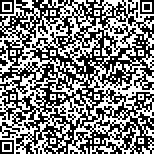下载中心
优秀审稿专家
优秀论文
相关链接
摘要

在研究遥感信息和水稻生长模型的同化过程中, 最小化遥感反演与生长模型(RiceGrow)输出的水稻生长\n信息差值绝对值时引入了一种新的优化算法-粒子群算法(PSO), 并对比了其与模拟退火算法(SA)的优缺点; 探讨\n了叶面积指数(LAI)和叶片氮积累量(LNA)分别作为同化参数时的同化效果。结果表明, PSO 无论是从同化效率还是\n反演精度上都要好于SA, 粒子群优化算法是一种可靠的遥感与模型同化算法; LAI 和LNA 作为外部同化参数时各\n有优势, LAI 作为同化参数可获得较准确的播期及播种量, 而LNA 作为同化参数可获得更为准确的施氮量信息。但\n是LAI 作为外部同化参数时的反演结果总体要优于利用LNA 作为同化参数时的反演结果。利用试验资料对该技术\n进行了测试和检验, 结果显示反演的模型初始参数的平均值与真实值的相对误差(RE)均小于2.5%, 均方根误差\n(RMSE)为0.7—2.2, 产量模拟值与实测值之间的相对误差为5%左右, 模拟与实测相关指标值吻合度较高, 该同化\n技术具有较好的适用性。从而为生长模型从单点扩展到区域尺度应用奠定了基础。
The choice of optimization method is very important in the assimilation process of crop growth model and remote\nsensing data, and it concerns the running efficiency and result accuracy of assimilation. In this study, a new\noptimization--Particle Swarm Optimization (PSO) technique is used for assimilating remote sensing data and RiceGrow model\nin minimizing difference between inverted and simulated values by remote sensing and RiceGrow model. We compare PSO with\nanother optimization--Simulated Annealing (SA) and explored the assimilation result when LAI and LNA are used as external\nassimilation parameters respectively. The results show that PSO performed better than SA in both running efficiency and\nassimilation result, which indicates that PSO is a reliable optimization method for assimilating remote sensing information and\nmodel. LAI and LNA each have advantage as external assimilation parameters, sowing date and seeding rate can be well\ninverted when LAI is selected as external assimilation parameter, while nitrogen rate is better predicted using LNA. However,\nthe inverted result is better when LAI is employed as external assimilation parameter. Experiment data is used to test the\nassimilation technique and result shows that the relative errors for initial parameters of growth model and yield are less than\n2.5% and 5%, respectively. RMSE values are between 0.7 and 2.2, which indicates that the assimilation technique based on PSO\nis reliable and applicable and that this new assimilation technique can lay the foundation for crop model application from spot to\nregion scale

